Master Boomi Atom Queue: A Complete Guide
Introduction
This blog will explore the benefits and outline the detailed steps for retrieving and sending data to a Boomi Atom queue.
What is Boomi Atom Queue?
The Boomi Atom Queue connector enables sending and receiving messages with native Integration Atom message queues. It supports both Point-to-Point and Pub/sub-messaging models. Deploying the Boomi Atom Queue connector does not impact on your license count, allowing for multiple deployments across various Atoms and environments.
Queue components can also be reused in other processes and process steps.
Note: Atom message queuing is an optional Boomi feature. User needs to enable this feature in account, from Boomi sales representative.
Use Cases
Asynchronous Data Handling: Boomi Atom Queue is useful for managing large data volumes asynchronously. It allows one system to push data into the queue while another system processes it at a more controlled pace, ensuring optimal system performance.
Load Distribution: The Boomi Atom Queue balances workloads by distributing tasks among multiple consumers, preventing any one system or process from being overwhelmed by spikes in data, thereby maintaining system stability during high traffic periods.
Data Decoupling: When different systems need to interact but operate at different speeds, the queue serves as an intermediary. This enables the source system to send data without waiting for the destination system to be ready, facilitating smoother interactions between systems.
Requirements and Scope
The Boomi Atom Queue can function as a point-to-point queue, a messaging system in which messages are sent from one sender to a single recipient. When the recipient is ready to process the message, they retrieve it from the queue where the sender placed it. The queue acts as a temporary storage area, ensuring that each message reaches its intended recipient.
Atom Queue Setup
Two main components are defined below which need to be configured in a connector to send and receive messages from and to atom message queues,
- Boomi Atom Queue Connection
- Boomi Atom Queue Operation
Connections define the connection where the endpoint exists, and the operation is defined as how to interact with that endpoint.
The connector supports below actions/methods of retrieving messages from a message queue
- Get Action for Batch retrieval
- Listen to action for event-driven retrieval (Real Time)
Implementation
In this section, we will see how to implement an atom queue from which we can store inbound data and outbound data for our atom queue at the Atom Level.
Boomi Atom Queue Connection
In this section, we will see how the Boomi atom queue connection is set up,
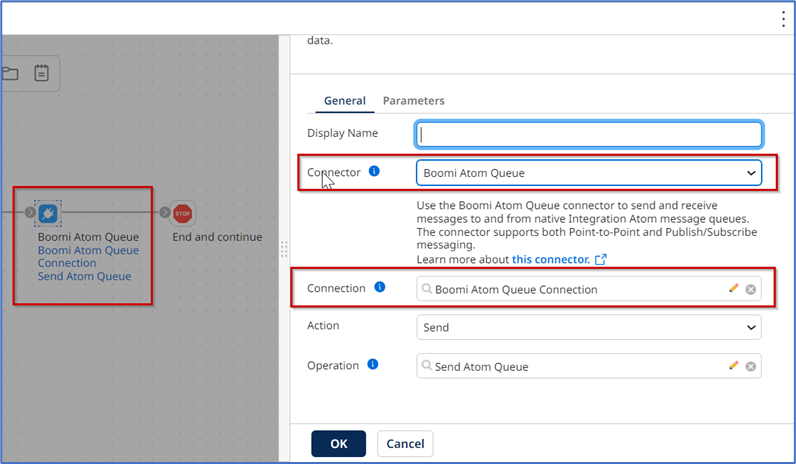
Step 1: We need to set up the connector type as Boomi Atom Queue. To create connection for atom queue, click on plus button.
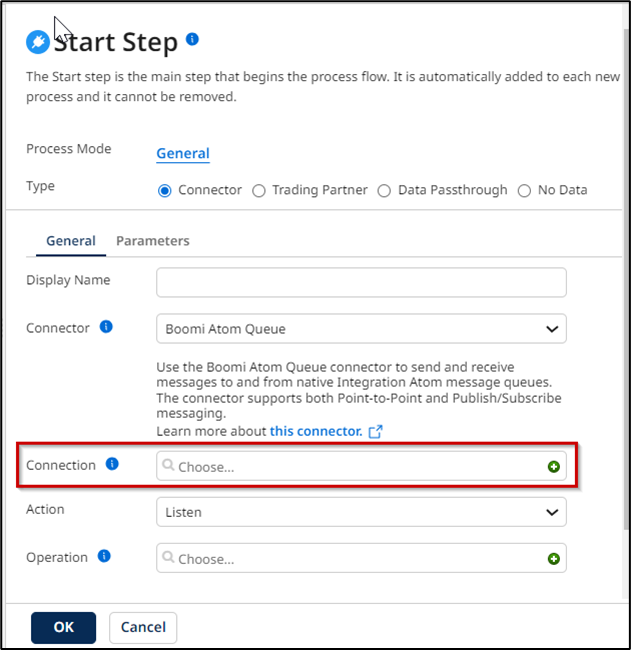
Step 2: Then input Queue Name this can be used to define the queue which you are going to refer to give appropriate queue name and then select queue type.
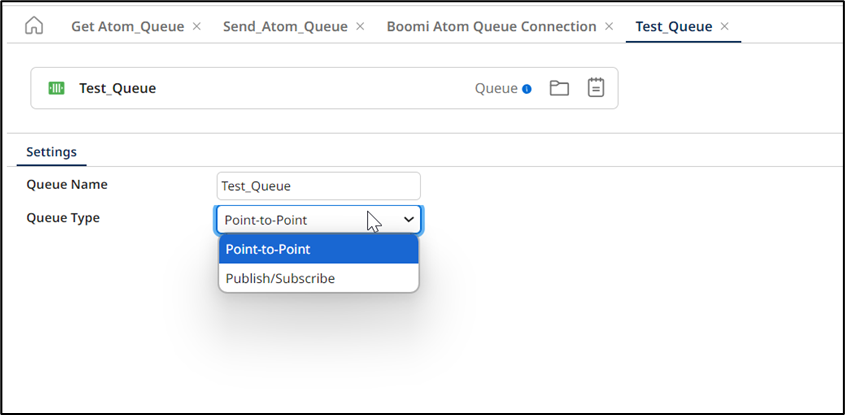
Queues are of two types Point to Point and Publish/Subscribe. We will see in detail below.
Point-to-Point: Multiple senders can send messages to a Point-to-Point queue, with each message guaranteed to be delivered to a single receiver. These queues retain messages until they are either received or expired. Point-to-Point queues are also durable, ensuring reliable message delivery.

Publish/Subscribe: In a Publish/Subscribe queue, publishers send messages to the queue, while subscribers can register to receive them. The publisher and subscribers are not aware of each other, and each message can be received by zero or more subscribers.
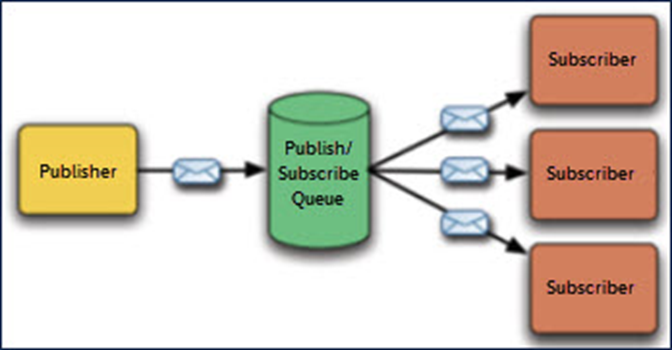
For our demo select point to point atom queue while creating the connection in Boomi.
Boomi Atom Queue Operation
Operation defines what you want to do or perform. Atom Queue supports Get, Send, Listen actions.
In today's blog, we will create a listen and send atom queue operation. Get operation is used to receive data from the queue and send operation is used to send data to a queue, listen action is used to listen to the queue in real time if the queue is added with a message listen process will automatically execute and fetch that data.
Note: Action type listener should be deployed on a runtime to work Meaning we need to deploy our process to an atom for a listener to work and listen for requests in real-time.
In this section, we will configure get operation
Step 1: Select Action type as listen and click on the plus icon
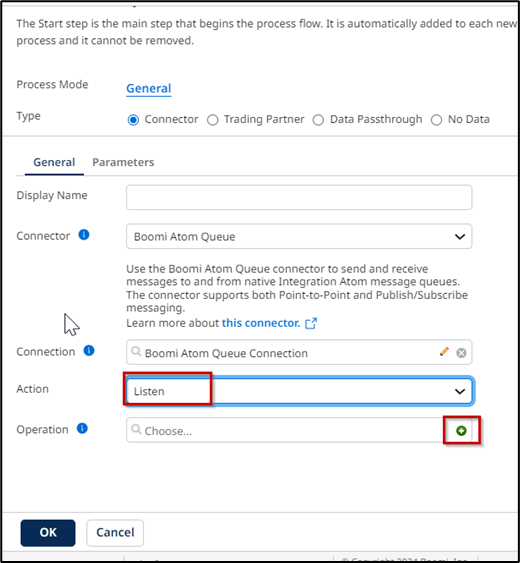
Step 2: Give the appropriate name for your atom queue operation connector action will be defaulted to listen
Consume from dead letter queue when checked it retrieves a list of failed messages in short, the messages which are not delivered correctly.
For the first in first out approach set maximum concurrent executions to 1 in our case as we are using listener select 3.
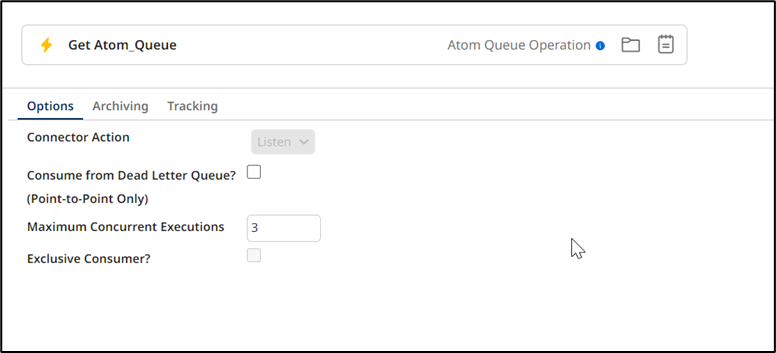
In this section, we will configure the send operation
Step 1: Select action as send and click on the plus icon to create a new send operation.
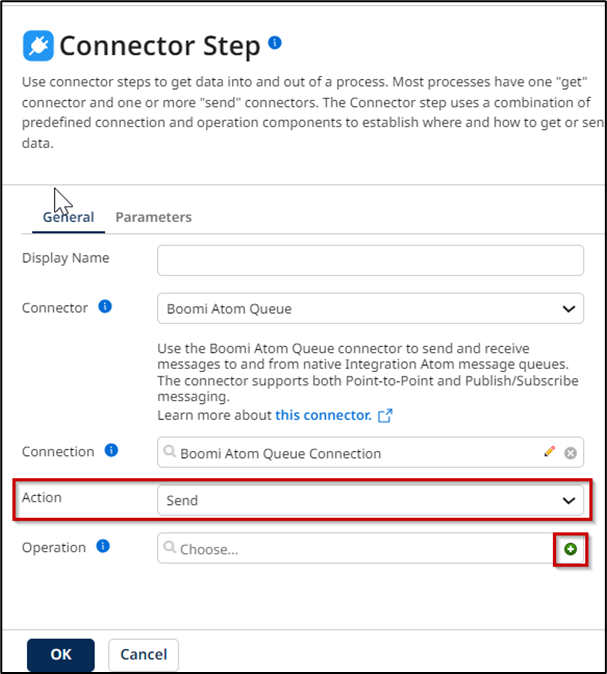
Step 2: Give the appropriate name to the operation and select the batch size which specifies the number of documents to include in each outgoing message. The default setting is 5, and a value of 0 indicates that all documents will be sent together in one message.
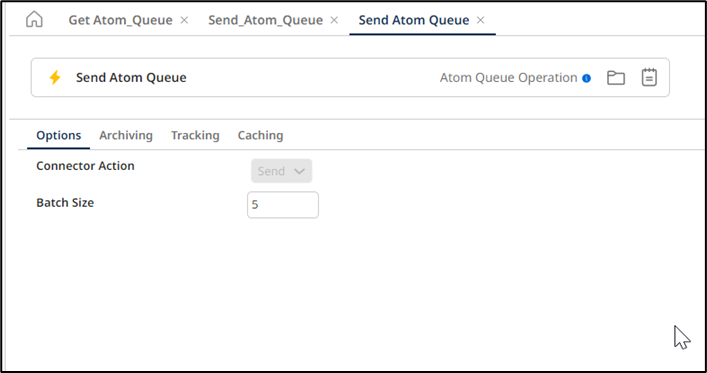
Working
Sending Data to Atom Queue
We will run the process and send data to atom queue once process execution is done our data gets added to queue on atom level.
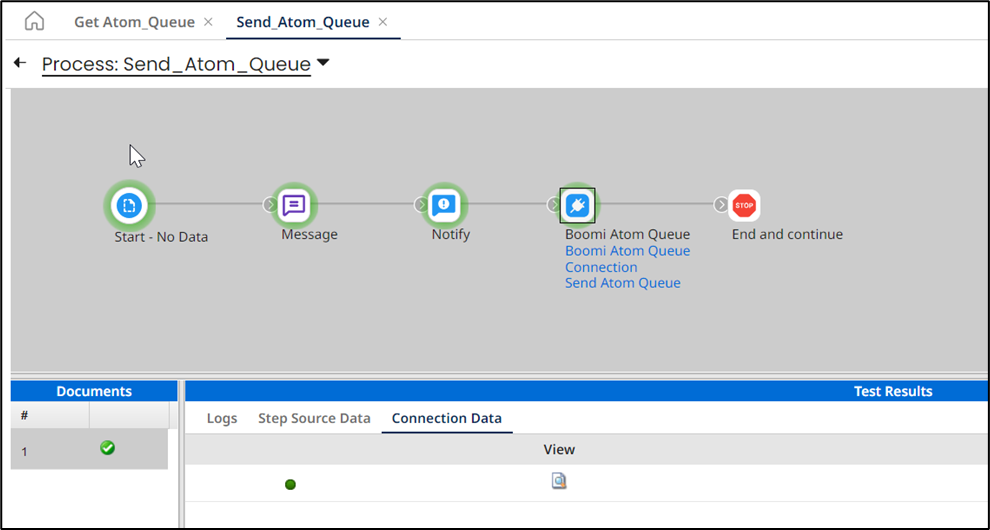
Our data gets sent as a message to the queue that we created on atom level, and it gets stored here. It will be stored here unless any other process picks up those messages.
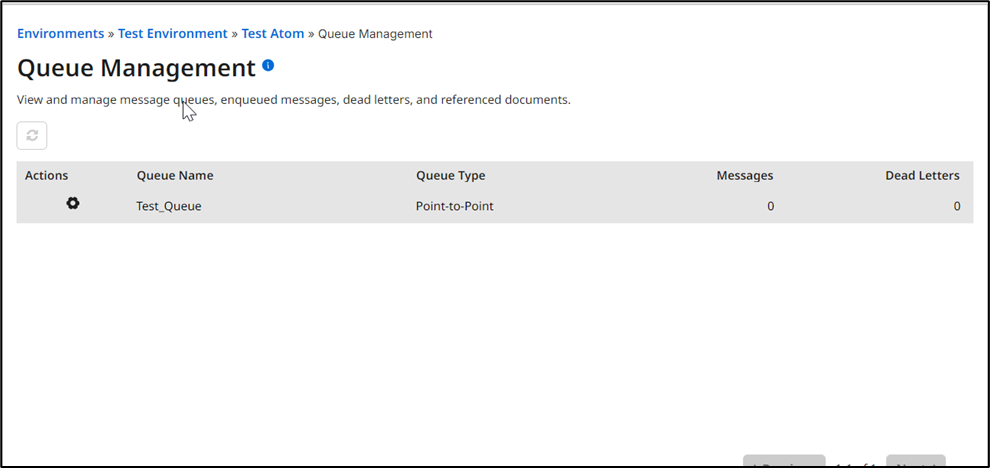
In our cases our listener process which is deployed on the same atom where we have defined our queue. picks up that data and we can see the same in process reporting.
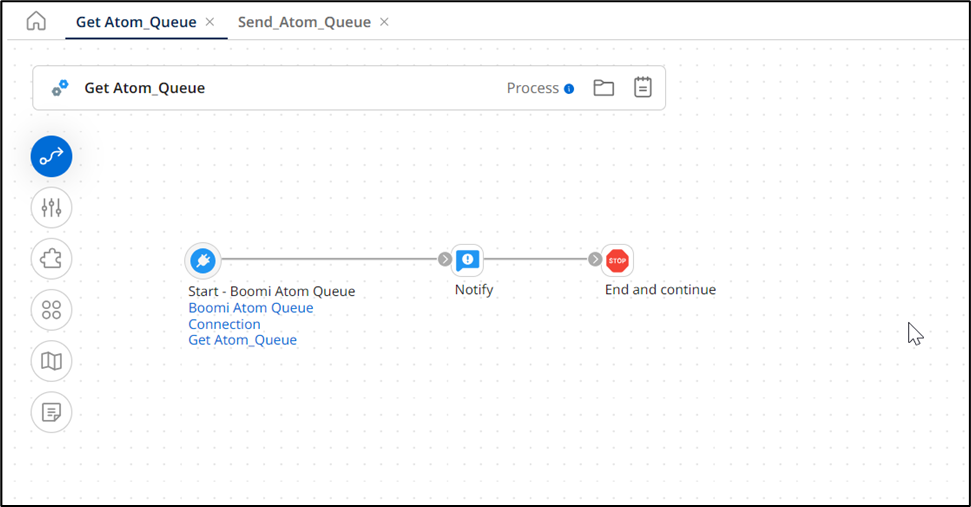

Conclusion
Boomi Atom Queue is a powerful tool for managing and streamlining integration processes. It enhances the overall efficiency of data handling by offering a scalable and reliable messaging system, ensuring seamless communication between different systems and applications. Its flexibility, ease of implementation, and support for various message queuing patterns make it an excellent choice for businesses looking to optimize workflow automation. By leveraging Atom Queue, organizations can improve operational efficiency, reduce downtime, and future-proof their integration landscape in a dynamic digital environment.
Why Choose Blueflame Labs as Your Boomi Atom Queue Service Provider:
- Expertise and Experience: Blueflame Labs has a proven track record in implementing and managing Boomi solutions, including Atom Queue. Our team of experts can provide tailored solutions based on your specific requirements.
- End-to-End Solutions: We offer comprehensive services, from initial consultation and design to implementation, support, and ongoing maintenance.
- Customization and Flexibility: Blueflame Labs can customize Boomi Atom Queue to fit your unique business processes and integration needs.
- Cost-Effective Solutions: We strive to provide cost-effective solutions without compromising on quality or service.
- Customer Satisfaction: Our focus is on delivering exceptional customer service and ensuring your complete satisfaction with our services.
Blueflame Labs is your trusted Boomi Atom Queue service provider and experience the benefits of expert guidance, tailored solutions, and exceptional support. Contact us today.
Recent Blogs

Effortless Contracting with DocuSign CLM
Read More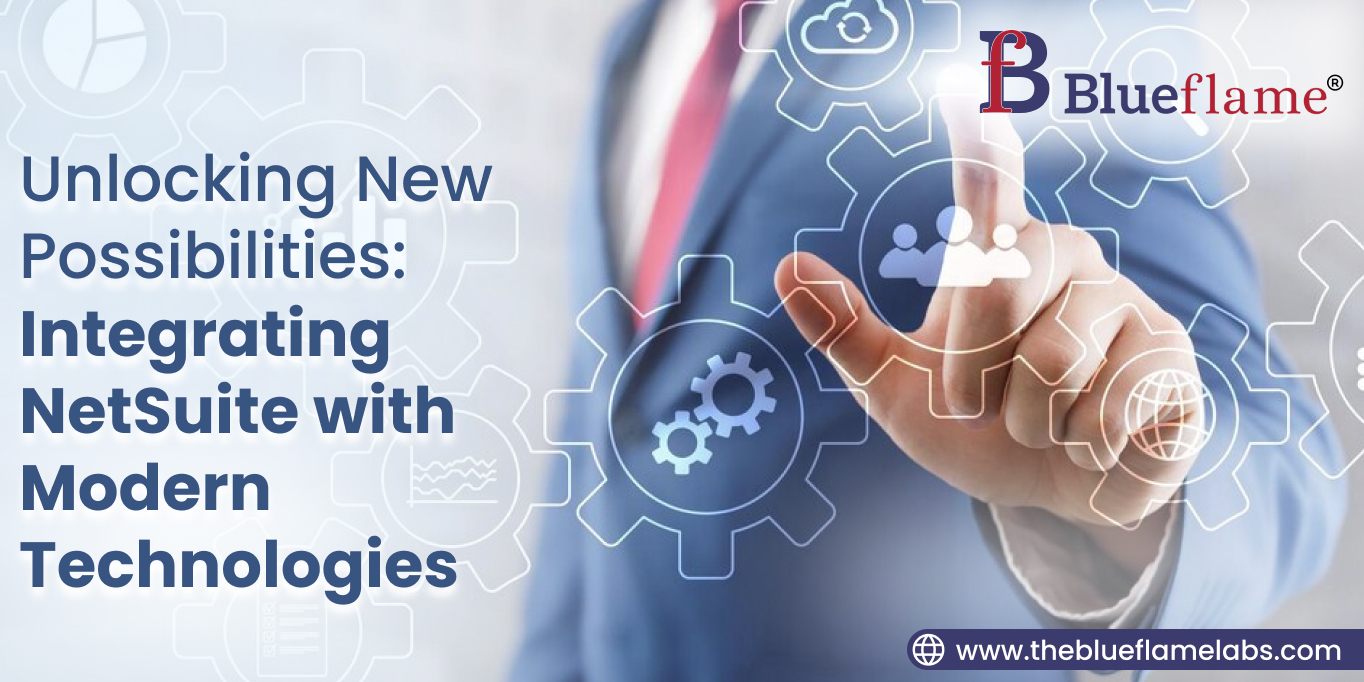
Unlocking New Possibilities: Integrating NetSuite with Modern Technologies
Read More
Discrete Manufacturing in Rootstock ERP for Business
Read More
Dynamics 365 Web Resources (JavaScript)
Read More
Integration between Salesforce and Woo Commerce Platform
Read More
Rootstock’s Revision Management for Engineer to Order (ETO) Manufacturers
Read More
Implementation Design Process of NetSuite
Read More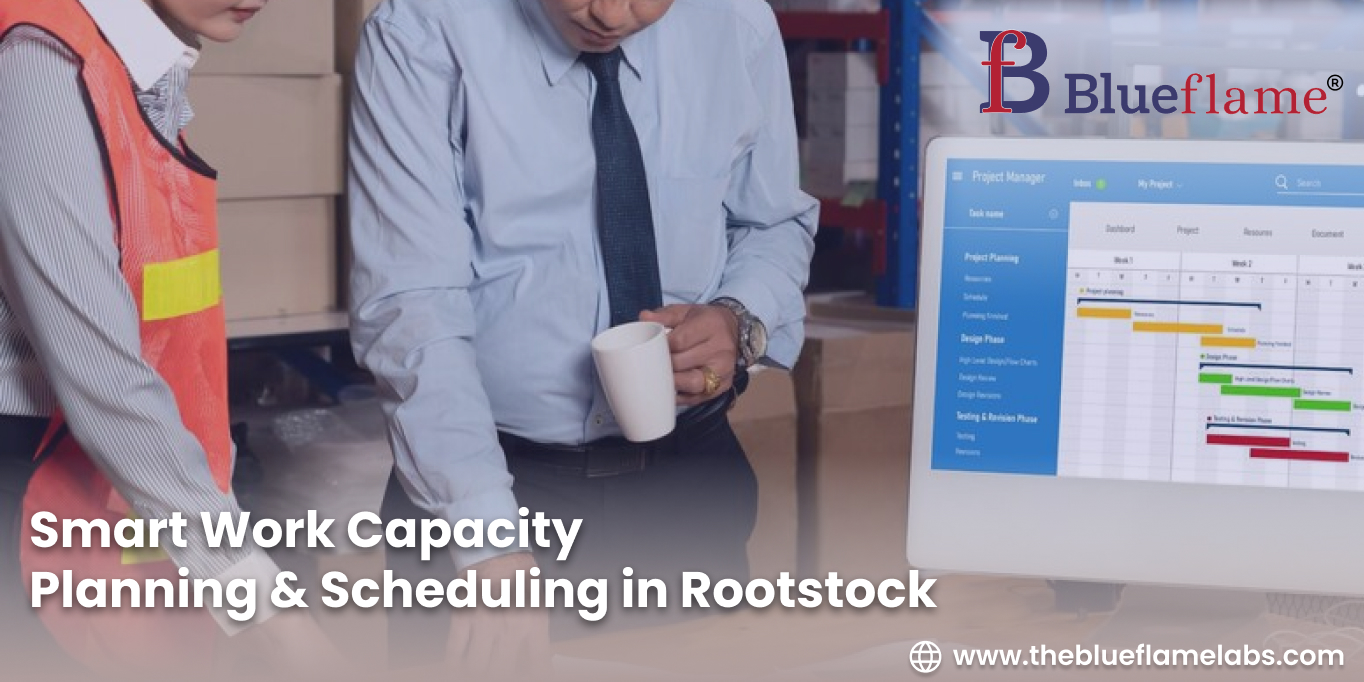
Smart Work Capacity Planning & Scheduling in Rootstock
Read More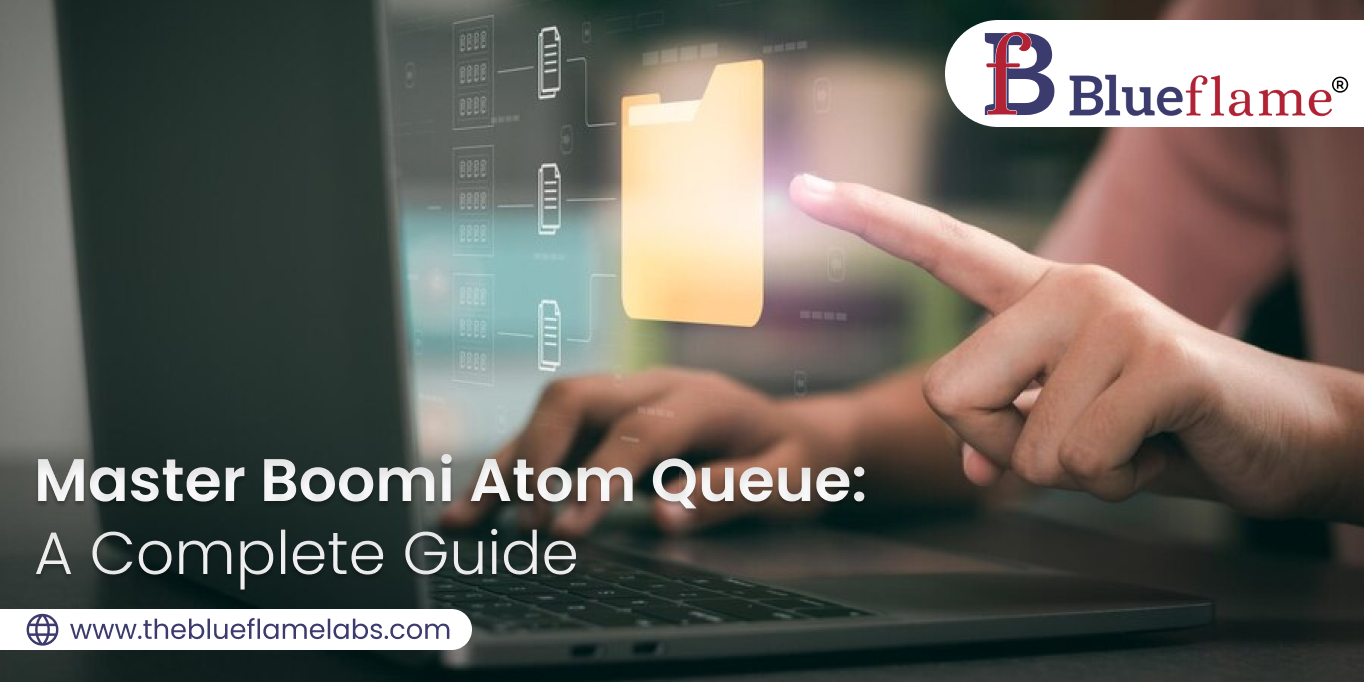


 Strictly Necessary Cookies
Strictly Necessary Cookies